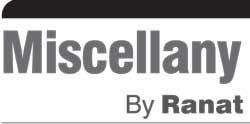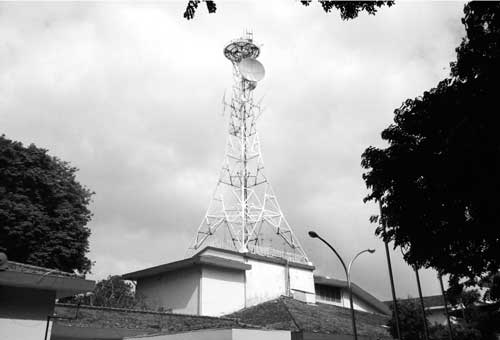Tuesday Feb 11, 2025
Tuesday Feb 11, 2025
Saturday, 18 February 2017 00:00 - - {{hitsCtrl.values.hits}}
As the curtain falls on a week’s celebrations at Rupavahini – the national TV channel – to mark its 25th anniversary, I was reminded of a comment made by a Director-General of Broadcasting (DG) possibly about 10 years before the inauguration, on the introduction of television to Sri Lanka. I read it in one of the administration reports of DG Neville Jayaweera. 
The Japanese Government had offered to gift a television station to Sri Lanka. The opinion of the DG of the Broadcasting Corporation was sought by the Government. DG Jayaweera commented that it’s one thing to accept the gift but the problem will be “to feed the brute”. The gift was not accepted.
Television was introduced to Sri Lanka in April 1979 by two private sector businessmen – Anil Wijewardena and Shan Wickremesinghe (the latter later set up TNL) – but lasted only three months when the Government took over and continues it using the original name, Independent Television Network (ITN).
The offer of the Japanese Government was still hanging in the air and with the advent of the J.R. Jayewardene Government in 1977, positive steps were taken to set up a national TV channel.
Sri Lanka Rupavahini Corporation (SLRC) was set up under an Act of Parliament. I remember attending the simple opening ceremony at the present premises when President Jayewardene opened the studios. Obviously the President was confident that they could feed the brute!
It was the era prior to the Administrative Service (SLAS) when the cream of university graduates were selected for the Ceylon Civil Service (CCS). After training they were given responsible posts. The heads of departments were always from the CCS. There were no political appointments and these elite bureaucrats did a thorough job without fear or favour.
Senior civil servant M.J. Perera was selected to head the Rupavahini Corporation. As a cub reporter I knew him in the latter part of 1950s when he was Director of Information. He had by then served as the first Sri Lankan Director of Broadcasting after John N. Lampson form the BBC returned to England.
I remember how tactfully he handled the media during the racial riots in 1958 when he was appointed Competent Authority under Emergency regulations. He had built up a cordial rapport with the media and could handle delicate situations intelligently.
He later became Director of Cultural Affairs and moved up to become Permanent Secretary in several ministries.
As university students Ediriweera Sarachchandra, M.J. Perera and D.G. Dayaratne (he too got selected to the CCS) came under the influence of Professor Gunapala Malalasekera and developed a keen interest in Sinhala language, art and culture. This interest helped MJP to direct the country’s electronic media on the right path.
The Lampson era at Radio Ceylon was more aligned towards Western traditions the promotion of English-oriented programmes but the trend changed with MJP’s arrival. In fact, it started when he was chosen as Additional Director towards the end of Lampson’s service.
His extensive knowledge and experience as a departmental head and his passion for oriental culture, he was the ideal choice to be Chairman/Director-General of the Rupavahini Corporation. He picked up experienced broadcasting hands for responsible posts and as sectional heads.
The choice of H.M. Gunasekera, a highly-respected broadcaster as Deputy Director-General, was one such appointment. Another was Henry Jayasena who headed the Programmes division. Rukmin Wijemanne (his father, always smartly dressed, Major B.J. Wijemanne was my teacher at Ananda) headed the Engineering Department.
Experienced staff of the Government Film Unit moved over to SLRC. Among them were at least two whom I knew well – Sarath Liyanage and Wimal Perera. Talented dramatist Dhamma Jagoda was in charge of the drama section.
SLRC provided challenging opportunities to those interested in a new medium of communication. The absence of a training facility was solved with Friederich Ebert Stiftung moving in to provide facilities to set up the Sri Lanka Television Training Institute.
Television opened a brand new medium for advertising. The two brothers – D.B. Nihalsingha and D.B. Suranimala – took the initiative to form Tele-Cine – a production house, closing a big gap to turn out TV programmes and advertising material. Both highly-creative professionals, they were ready when advertising agencies started looking round to get TV commercials made for their clients.
In addition, Nihalsingha scored a ‘first’ not only in Sri Lanka but in South Asia by producing the first-ever teledrama, ‘Dimuthu Muthu,’ introducing Devika Mihirani to the small screen along with Amarasiri Kalansuriya who was a film actor then. To sit for half an hour once a week and watch an interesting story developing was a new experience to the viewers.
His second effort was a musical, ‘Rekha’ with Lakshman Wijesekera and Chandralekha Perera as the key players with Rohana Weerasinghe directing the music and Professor Sunil Ariyaratne writing the lyrics. In addition to creating a template for tele-drama production, Nihalsingha trained technical personnel who soon turned out to be fine craftsmen.
That’s how it all began. The rest is recent history.
Discover Kapruka, the leading online shopping platform in Sri Lanka, where you can conveniently send Gifts and Flowers to your loved ones for any event including Valentine ’s Day. Explore a wide range of popular Shopping Categories on Kapruka, including Toys, Groceries, Electronics, Birthday Cakes, Fruits, Chocolates, Flower Bouquets, Clothing, Watches, Lingerie, Gift Sets and Jewellery. Also if you’re interested in selling with Kapruka, Partner Central by Kapruka is the best solution to start with. Moreover, through Kapruka Global Shop, you can also enjoy the convenience of purchasing products from renowned platforms like Amazon and eBay and have them delivered to Sri Lanka.
Discover Kapruka, the leading online shopping platform in Sri Lanka, where you can conveniently send Gifts and Flowers to your loved ones for any event including Valentine ’s Day. Explore a wide range of popular Shopping Categories on Kapruka, including Toys, Groceries, Electronics, Birthday Cakes, Fruits, Chocolates, Flower Bouquets, Clothing, Watches, Lingerie, Gift Sets and Jewellery. Also if you’re interested in selling with Kapruka, Partner Central by Kapruka is the best solution to start with. Moreover, through Kapruka Global Shop, you can also enjoy the convenience of purchasing products from renowned platforms like Amazon and eBay and have them delivered to Sri Lanka.